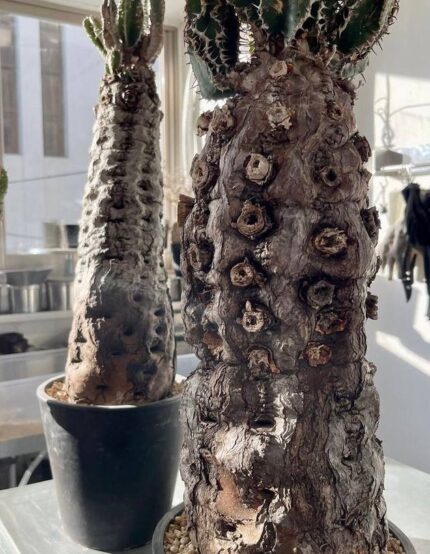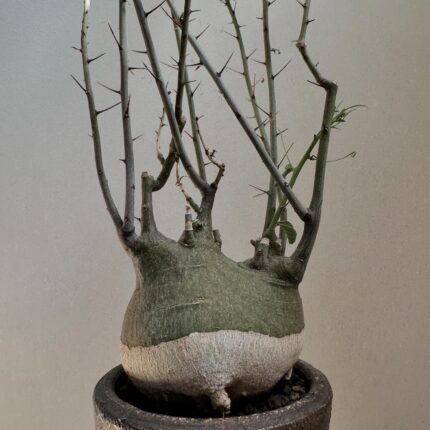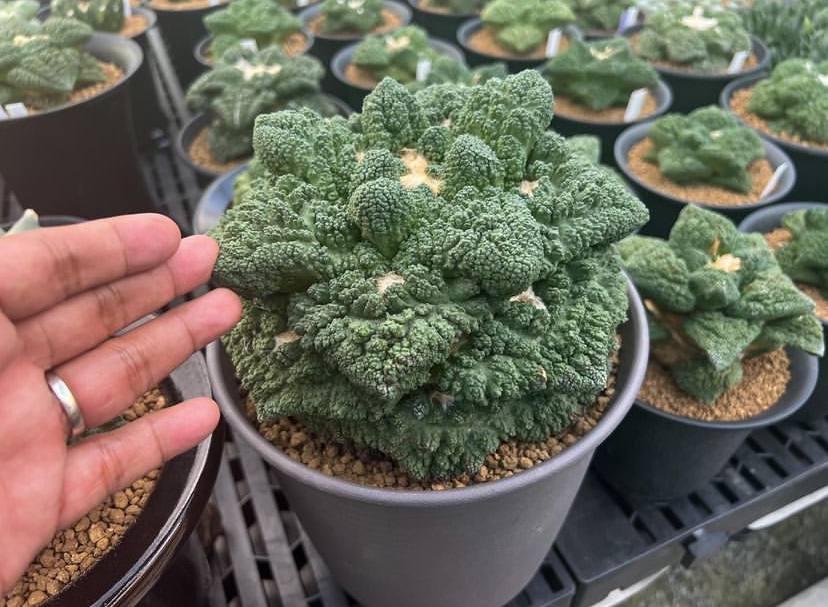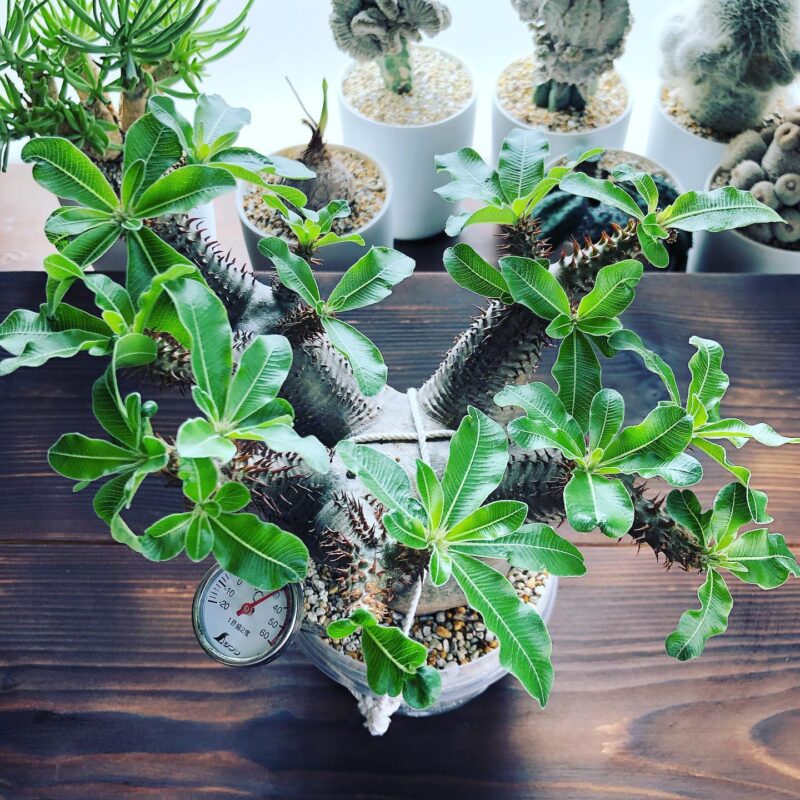Pachypodium brevicaule
is the smallest and most unique species in the Pachypodium genus. It has a remarkable rock-like caudex (swollen stem base) that resembles a sack of potatoes, with sparse leaves.



It produces bright yellow flowers in the late spring or early summer, which can cover a large specimen plant. [2]
The leaves are 1-2 cm wide and 2-4 cm long, forming compact yet loose rosettes. [2]
Care Requirements:
Pachypodium brevicaule is quite difficult to grow and requires specific care. It is sensitive to cold temperatures and cannot tolerate freezing conditions. The minimum temperature it can survive is around 55°F (12°C). [2]
It needs to be grown in very well-draining soil to prevent root rot. A potting mix amended with materials like scoria, pumice, or perlite is ideal. [2]
Watering should be done sparingly, only when the soil is dry to the touch. Overwatering can easily lead to rot. The watering schedule will depend on the plant’s growth stage and temperature. [1][2]
This plant requires full sun exposure to thrive. If grown indoors, it should be placed in a southwest-facing window. [2]
The ideal pH range for Pachypodium brevicaule is quite acidic, between 3.5-4.5. Adding a few drops of vinegar to the water can help maintain the proper pH. [2]
In the winter, the plant will go dormant and lose its leaves. During this time, watering should be reduced to a minimum.























